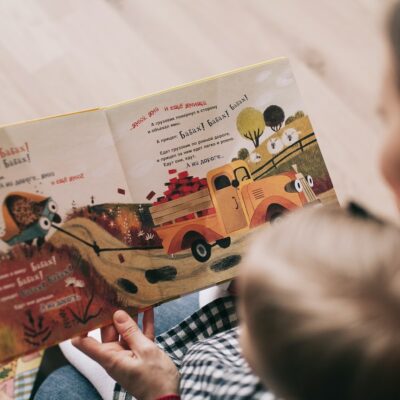Nurturing Your Child’s Interest in Reading

Children may grow, develop, and learn about the world in all its richness thanks to the special world of books, which opens the door to countless nooks and crannies of knowledge and imagination. Reading fosters the spark of creativity and curiosity that is so vital at a young age, in addition to improving vocabulary and language skills. Fostering a child’s interest in reading is a true art that calls for a lot of creativity, love, and patience. It is not just a task. This article will provide you with helpful hints and methods to assist you transform reading for your child from a mundane task into an enjoyable journey, fostering harmonious growth and fortifying your family’s relationship.
Recognising the value of reading
Reading plays an enduring role in children’s educational and emotional development. Every parent should explore more deeply the importance of reading and how it affects various aspects of children’s development.
Grammar correction and vocabulary expansion
One of the best methods for kids to increase their vocabulary is by reading. Children learn new words’ meanings and the context in which they are used when they come across them in a text. This aids in their internalisation and application of these words in speech and writing, enhancing their command of grammar and capacity for clear communication.
Brain Stimulation and Critical Thinking Development
Reading helps to enhance brain function in addition to being entertaining. Research shows that the process of reading activates the areas of the brain responsible for language comprehension, visual perception, and associative thinking. Reading forces children to analyze information, draw conclusions, and think critically about what they read, which is a fundamental skill for successful learning and problem solving in the future.
Gaining social and empathetic skills
Books offer a special way to get a glimpse into the thoughts, feelings, and customs of individuals who are living in different eras or locations. Children gain social skills and empathy by reading and learning to comprehend and relate to characters. This is particularly crucial in the modern world, as effective social interactions depend on one’s capacity to recognise and appreciate the emotions of others.
Acquiring knowledge about many cultures and lifestyles
Children who read have a window into the world and can learn about a range of countries, customs, and lifestyles. Their horizons are expanded, and it also encourages tolerance and appreciation for individual diversity. Seeing through the lens of different cultures helps children to better understand global interconnections and appreciate the diversity of the world.
How to create an atmosphere for reading
Fostering children’s interest in books requires creating a welcoming and cosy reading space in the home. Designating a specific area for reading fosters a positive association between the child and the location, so aiding in the development of reading habits. This corner should be equipped with soft armchairs or cushions, provide sufficient lighting to protect vision, and have shelves with easily accessible books selected with the child’s age and interests in mind. Such a space becomes a sanctuary of sorts where children can immerse themselves in the world of reading without outside interference.
The importance of your personal example as a reading adult cannot be overemphasized. Children, seeing their parents enjoy reading, tend to emulate this behavior. Reading books regularly in your child’s presence demonstrates that reading is a desirable and rewarding activity, not just a task or obligation. Discussing the books you read over dinner or during a shared vacation can also stimulate your child’s interest in reading, allowing him or her to see how books can be a source of interesting ideas and discussions. Creating a home environment that encourages reading and setting a personal example serve as the cornerstones for your child’s growth as a reader.
Try to engage in the reading process as much as possible
Reading aloud to your child improves your relationship and helps them build their language abilities, which makes learning fun and engaging. This approach shows the joy of reading while also enhancing the creativity. Talking about the stories that have been read to the kids fosters critical thinking and aids in their text analysis by allowing them to express their emotions and ideas. When it comes to children who struggle with reading or for those on the go, audiobooks are a terrific addition to traditional reading. They make literature more accessible, make it easier to understand complicated works, and encourage language learning through listening.

Selecting appropriate books
To choose the right books for your child, follow these guidelines:
- Consider your child’s interests: Select books based on your child’s hobbies and interests. If your child is passionate about a particular topic, such as dinosaurs or space adventures, choose books that match those topics. This will make reading more appealing and relevant to him.
- Variety of genres: Offer a wide variety of genres, from science fiction to historical novels, from comic books to classic literature. Children can learn about new interests and shape their preferences by trying out a variety of genres.
- Suitable reading level: Select books based on your child’s reading proficiency. Avoid books that are too difficult, which can cause frustration, and books that are too easy, which can get boring quickly. By selecting books that are slightly above your child’s current reading level, you can encourage growth and development of your child’s reading skills by providing achievable challenges.
Incorporating technology into reading
The integration of digital technologies into the reading process greatly enriches children’s reading experience. E-books and reading apps offer the convenience of access to a huge range of literature with the ability to adapt the text to the individual needs of each child, such as enlarging the font or adjusting the screen lighting. This makes reading more accessible to children with special educational needs and fosters positive attitudes towards reading.
Interactive books deepen immersion in the story through animations, sound and visual effects, as well as offering educational games and tasks related to the text. These components not only increase children’s reading engagement and interest, but they also help them develop their critical thinking and creative abilities. Reading with digital technology creates additional learning and entertainment options and makes reading an engaging and dynamic activity that promotes a love of books from a young age.









